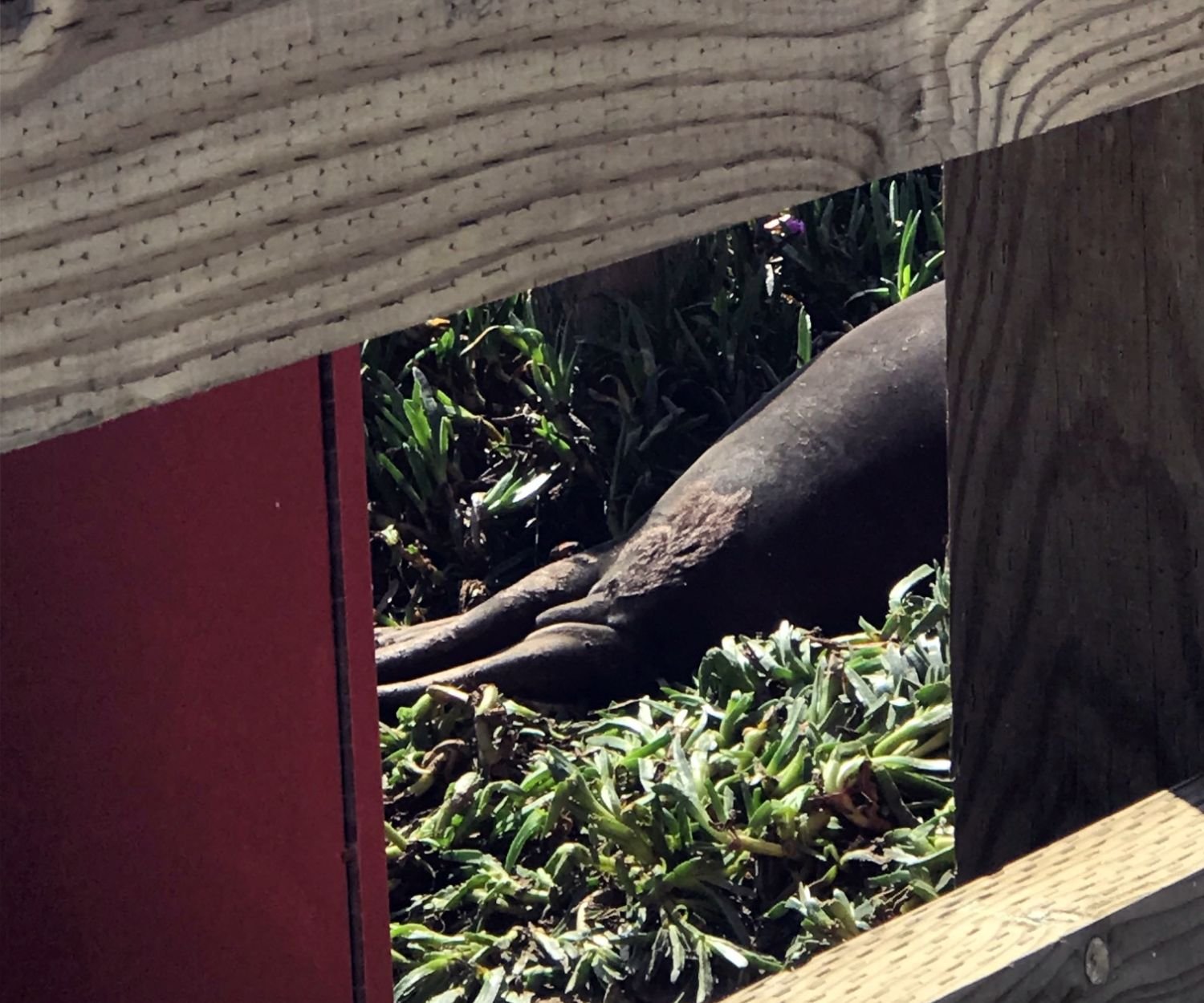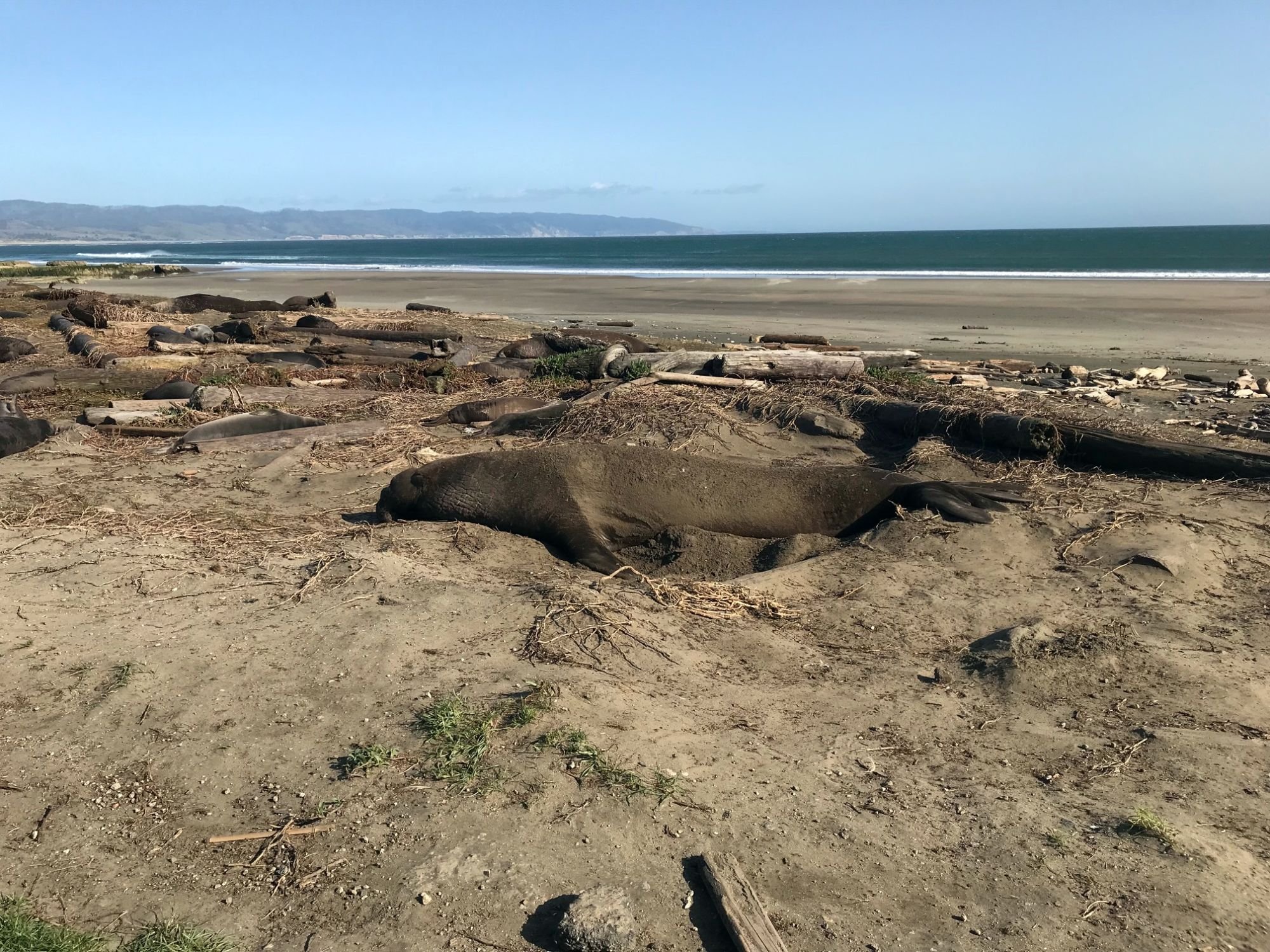Winter Wildlife Docent Day 3
For the first time all season, I was posted at Drakes Beach - the headquarters of the Winter Wildlife Docent program. The beach remains closed due to elephant seal breeding activity however when docents are present, the beach parking lot is open from 10:00am to 4:00pm. Visitors can get an exceptional view of elephant seals from the parking lot.
Weather conditions were intense that day (Thursday, March 7) as they often are at Drakes Beach. The tide had lowered to five feet by the time I arrived at 9:30 am from a high of more than six feet at 7:30. By 1:00 pm, it plummeted to a minus tide— a huge swing from high to low in just a few hours. Possibly as a result of the high tide, the elephant seals were closer to the parking lot which was ideal for viewing. Visitors got a closeup view of many huge adult male elephant seals stretched out on the green cushion of ice plant or on the sand. In addition to the high tide, it was an extraordinarily windy day. The docents took turns talking to visitors in the windiest areas and otherwise stayed in the sheltered windbreak of the visitor center building to answer questions. What a contrast between the calm sunny picnic table area in front of the visitor center and the raging wind just a few yards away.
The volunteer docents battled the wind to setup the safety cone fence to keep 30 feet (about 2 car lengths) between the elephant seals and people. The wind knocked over the safety cone and pole barrier but we learned that zig zagging the poles made it more stable.
The beach near the parking lot was jam packed with adorably plump weaned elephant seal pups and exhausted adult males. All but one female elephant seal had left the beach to feed and replenish in the ocean after more than a month onshore nursing their pup without any sustenance.
As always, I talked to some fascinating visitors. One woman was visiting from the Chicago area and worked for the Forest Preserves of Cook County - what a wonderful respite for urban Chicago and nearby communities. I also spent time talking with Sam, an incredible photographer from San Diego who is keenly interested in observing and photographing Peregrine falcons. Several years ago, I observed a nesting pair of Peregrine falcons at Drakes Beach but later that year their nest was lost to the crumbling cliff — after the breeding season, fortunately.
In the early afternoon Point Reyes marine mammal ecologist, Sarah Codde took a few docents with her to survey and count elephant seals on the beach - one of the perks of volunteering with the Winter Wildlife Docent program. Sarah is a wealth of information and stories about the seals.
Our intrepid docent leader, Leslie pointed out the cutest thing all day — a little patch of fur on the hind end of an elephant seal pup. It was the last vestige of baby fur. See image below. That we were close enough to see it without binoculars is a testament to what a great viewing location Drakes Beach is for elephant seals. Several visitors noted that Drakes Beach offers a much closer view than other popular locations such as Año Nuevo - though you never know where the elephant seals will decide to rest.
The adult male elephant seals have lost so much weight they are a fraction of their earlier size - though still quite imposing! They are exhausted and famished at the end of the breeding season. With no more females on the beach, hunger will finally outweigh exhaustion and the males will rally their remaining strength to leave the beach by the end of the month to feed and replenish. See image below.
I’m volunteering every Thursday for the month of March so stay tuned for more elephant seal docent adventures.


